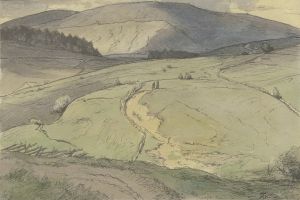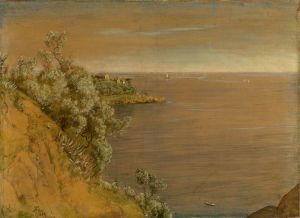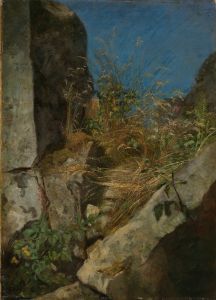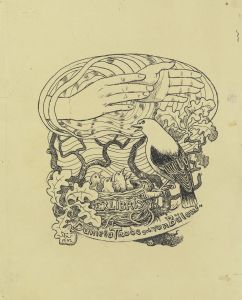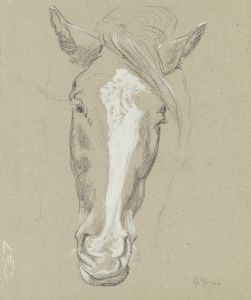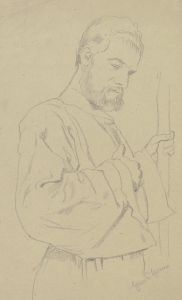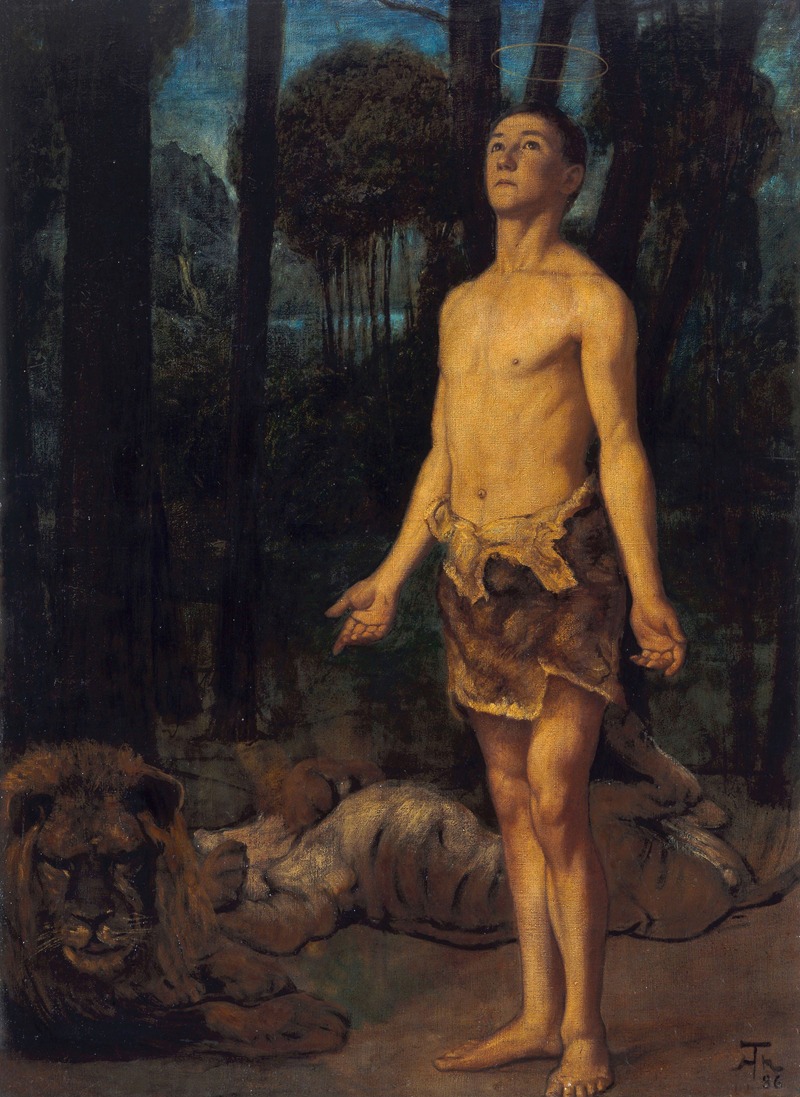
Daniel in the lion’s den
A hand-painted replica of Hans Thoma’s masterpiece Daniel in the lion’s den, meticulously crafted by professional artists to capture the true essence of the original. Each piece is created with museum-quality canvas and rare mineral pigments, carefully painted by experienced artists with delicate brushstrokes and rich, layered colors to perfectly recreate the texture of the original artwork. Unlike machine-printed reproductions, this hand-painted version brings the painting to life, infused with the artist’s emotions and skill in every stroke. Whether for personal collection or home decoration, it instantly elevates the artistic atmosphere of any space.
Hans Thoma (1839–1924) was a German painter associated with the Realist movement, known for his detailed and evocative works often inspired by biblical, mythological, and natural themes. One of his notable paintings, Daniel in the Lion’s Den, depicts the biblical story of the prophet Daniel, who was thrown into a den of lions as punishment for his unwavering faith and refusal to worship the king of Babylon.
The painting portrays Daniel surrounded by lions, emphasizing the dramatic tension of the moment. Thoma’s interpretation of the scene reflects his characteristic style, which combines realism with a sense of spiritual and emotional depth. The composition captures the vulnerability of Daniel, who is shown in a moment of prayer or contemplation, contrasted with the physical power and latent danger of the lions around him. The work is notable for its attention to detail, particularly in the rendering of the lions and the textures of their fur, as well as the atmospheric quality of the setting.
Hans Thoma’s Daniel in the Lion’s Den is an example of his ability to merge religious themes with a naturalistic approach to painting. While the exact date of the painting’s creation is not widely documented, it aligns with Thoma’s broader body of work, which often explored themes of faith, morality, and the human relationship with nature. The painting reflects the influence of both German Romanticism and the Realist tradition, which sought to depict subjects with authenticity and emotional resonance.
Thoma’s works, including Daniel in the Lion’s Den, are celebrated for their technical skill and their ability to convey profound narratives. His art often draws on his personal connection to the landscapes and cultural heritage of his native Black Forest region in Germany. Today, Hans Thoma’s paintings are housed in various museums and collections, particularly in Germany, where he remains a respected figure in the history of 19th-century art.
Further details about the specific provenance or current location of Daniel in the Lion’s Den are not readily available in public records.






